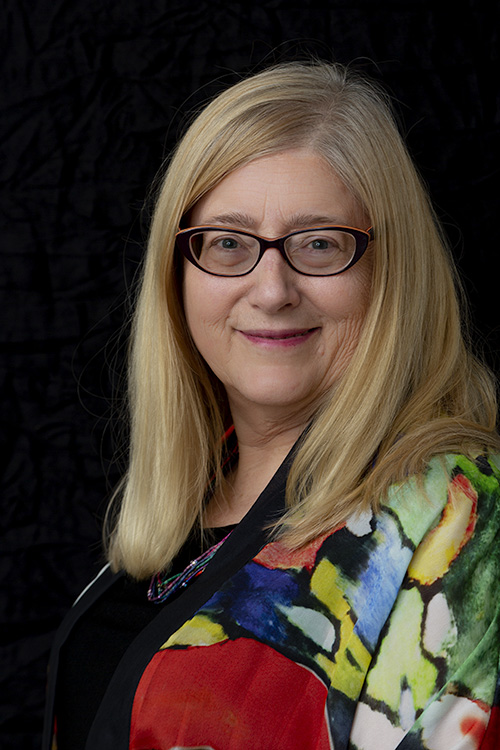The Fear of Freedom
Defining Our Goals in Later Life
We spend much of our adult lives racing around like chickens with their heads cut off. Sadly, the entry of most women into full-time employment, which happened in our lifetimes, did not mean that spouses took on half the unpaid toil of keeping house and raising children. Plus the greater supply of labor in the workforce led to lower real wages across the board. Soon two incomes were needed to support a family in any sort of comfort. And so women were trapped in that dual role of worker and homemaker.
The Second Shift, as Arlie Hochschild’s 1987 book suggests, is the Faustian bargain that second wave feminists made to attain economic freedom for women in the United States. To this day, heterosexual couples with children mostly rely on the woman to keep it all going once her paid workday is through. But then in our sixties the whole catastrophe resolves. When the children grow up and our careers wind down, the occasional load of laundry is all that remains of the trifecta of kids, work, and home that we carried for so long.
You might expect women to greet this liberation with open arms, and many of us react to retirement like a seventh grader on the first day of summer break. The world opens up: Wilderness trails await our wandering feet. New recipes tempt us. Political campaigns welcome our volunteer energy. There are galleries to fill with our paintings and readers to beguile with our books. Everything we ever wanted to do, every dream we postponed during those too-busy years, is suddenly right in front of us.
Yet for many women the prospect of an empty nest and life without a career is frightening. When I encourage women to reconnect with their dreams, one answer I often hear is some variation of “I’ve focused on job and family for so long that I don’t know what my dreams are.”
Because of pay discrimination and the time many of us spend away from the workforce caring for young children, the average American woman approaches retirement with less savings than the average man—and must stretch those dollars over a longer lifespan. But for many women approaching retirement existential dread is just as real as money worries. Here are some of the questions women voice:
Fear of loss of status: I’m already less visible as an older woman. Who am I without my career? What will I say when people ask, “What do you do?”
Fear of loss of social connections: Most of my daily conversation is with coworkers. And I know how it goes when someone leaves a job: Everyone plans to keep in touch but over time those connections fade.
Fear of loss of purpose: I’ve been taking care of everyone, at home, at work, for decades. What is the point of my life when that stops?
How to counteract these fundamental fears and enjoy a healthy and powerful next phase of life? First, let’s recognize that these concerns are normal. Retirement is a huge change, a big loss of structure, and it’s only natural to feel unmoored.
Lay the Foundations Before You Retire
Second, we can start building a post-retirement life ahead of time. Retirement is a process, not an event. Months or even years before that last day of work, we can lay the foundations for enduring purpose and social connections. Try these steps:
Collect information about what brings you joy:
- Look back at your calendar for the past year. What did you do that you particularly enjoyed? What events did you miss that you wish you’d had time for?
- Look at a catalog for the Osher Lifelong Learning Institute. What courses appeal to you, as something new you’d like to learn?
Make Peace with Your Inner Critic:
- Whether we love or hate our line of work, we’re probably pretty comfortable doing it by now. Part of the fear of retirement is worry about trying new things. The best advice I’ve seen: “Be ready to suck at something new.”
- Before you retire, try at least one creative project you’ve never done before but where you’re unlikely to judge yourself (collaging, anyone?).
Commit (or Recommit) to a Movement Practice:
- What types of movement bring you joy? Could be hiking, swimming, or just dancing in your living room.
- Make time for movement a couple times a week while you’re still working, and plan to increase that once you retire.
- Movement is an important aspect of self-care. In retirement we can care for ourselves with the same nurturing spirit we’ve offered to others. What other forms of self-care are significant for you? Eating more vegetables? Keeping up with dental work?
Explore Ways to Redefine Purpose:
There are many ways to build a sense of purpose in our lives that have nothing to do with the job we leave when we retire.
- Explore ways to give back. Take a personal inventory of your innate interests, and of the skills you developed during your career. What do you bring to the table?
- Your purpose after retirement may involve creative skills you have now or would like to learn. What forms of creativity appeal to you? Interest is foundational; skills can be developed.
- Brainstorm ways to use your interests and skills in the service of others. Could be volunteer work, or a part-time job that appeals to you. Your form of service may involve writing or teaching; you may even decide to start a business that uses your skills and talents. If you decide to become an entrepreneur, consider how that endeavor fits with self-care and other priorities.
Build Social Networks Outside of Work:
- As you prepare to retire, reconnect with friends you’ve been too busy to see during your peak work and childrearing years. If they are about the same age, they may also be ready to rebuild networks.
- Explore activities that bring you into contact with people with shared interests. Could be a meditation group, or an artists’ collective, or a water aerobics class. What grabs you?
The Fear of Freedom Can be Beaten
Once You Retire….
Most of us begin retirement exhausted from years of being way too busy. The impulse to do nothing is great self-care that may last a week or a month. Then one day we wake up bored and ask “what’s next”.
Push Back on Internal Ageism
As we start our retirement, the ageist messages we’ve internalized all our lives may come back to bite us. “Over the hill,” “Senior moment,” “OK Boomer,” you know the drill. Stop feeding those messages in your own mind. Instead, embrace the freedoms you now enjoy. What other people think of you is suddenly irrelevant. Think of yourself as sexy and unleashed.
Define Your Post-Retirement Identity
Consider what you learned about yourself through the process of preparing for retirement. Who are you now? An artist? A teacher? A writer? (Yes, you get to claim whatever you aspire to be. If you’ve written a grocery list you’re a writer.)
- Brainstorm new answers to the question, “What do you do?” Practice an answer that reflects your new direction.
- Start a LinkedIn page (or revise your existing page) to reflect your new endeavors. Connect with people in similar roles and support them.
- Order post-retirement business cards that announce your new direction.
Structure Your Time:
Throughout those Second Shift years, there was never a question about planning our days. Between our boss and our kids and taking care of the house, there was maybe five minutes a week left to plan. One of the greatest and at the same time most daunting things about post-career life is the total control of our schedule. So take a deep breath and start with the big stuff.
Big Rocks: I’m a fan of the Franklin-Covey Big Rocks method. Imagine you have four glass containers. One is empty, one contains big rocks (your top goals), one contains medium rocks (your medium priorities), and one contains gravel (the minutia of life). Now imagine that the empty container is your time this week. If you fill the empty container with gravel, there is no room for the big rock. But if you start with the big rocks, then add the medium rocks and finally the gravel, you’ll end up with all three sizes – and a well-balanced week.
So think about what you have learned through self-inventory and brainstorming, and choose three Big Rocks: your top priorities for your first retirement year.
Next, at the start of each week, map out roughly what you will do each day, including:
- Big Rocks: What will you do this week in line with the purposes you’ve defined for your retirement? Could be volunteer work, creative pursuits, etc.
- Self-Care: Some form of movement each day, with more vigorous movement 3-4 times a week. What other self-care will you do this week? (Hint: relaxation counts.)
- Social Connections: How will you interact with others each day? Could be a phone call about a shared volunteer effort, or perhaps you’ll attend a class.
And then at the beginning of each day, get granular about the tasks and activities you’ll set, in line with your goals, self-care, and connections with others.
In our work life, most of us wished for shorter hours and more time off. So it may seem paradoxical that many of us dread the approach of retirement. But it’s only natural when the road ahead is undefined. To embrace the freedom and power of our post-career life requires us to re-learn who we are and what we most want. Freedom means defining our own goals and the ways we use our time to meet those goals.
It’s a journey well worth taking: the journey to freedom and power in our later years.


